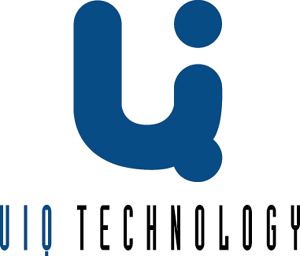 | ||
UIQ (formerly known as User Interface Quartz) by UIQ Technology is a software platform based upon Symbian OS. Essentially this is a graphical user interface layer that provides additional components to the core OS, to enable the development of feature-rich mobile phones that are open to expanded capabilities through third-party applications.
Contents
- V rally on sony ericsson p800 symbian 7 uiq 2
- History
- End of UIQ
- UIQ Programming Languages
- UIQ Iterations since Symbian v91
- List of some UIQ 2x Phones and its Version
- List of UIQ 3x Phones and its Version
- First Phones to use platform versions
- References
V rally on sony ericsson p800 symbian 7 uiq 2
History
On November 7, 2006, Sony Ericsson announced they had agreed (in principle) to buy UIQ from Symbian Ltd. and run it as a separate subsidiary. The UIQ products would be "openly available, licensed on equal terms to all its licensees". The sale will complete in the next few months "pending regulatory approval and customary closing conditions". The acquisition was completed in February 2007.
On October 15, 2007, Sony Ericsson and Motorola, Inc. announced an agreement for Motorola to purchase a 50% interest in UI Holdings BV, the parent company of UIQ Technology. The two companies worked and invested jointly in the development of UIQ.
UIQ Technology was based in Ronneby, Sweden and situated in the Soft Center Science & Research Park. The first General Manager was Peter Molin and the first Product Manager was Martin Hill. Johan Sanderg was appointed General Manager in 2000.
End of UIQ
With the establishment of Symbian Foundation in 2008, UIQ ceased to exist. S60 was the UI choice of Symbian Foundation; UIQ contributed its assets to the foundation. Patrick Olsson of Sony Ericsson announced on October 21, 2008 at the Smartphone Show 2008 in London that UIQ didn't make it, it didn't attract the operator, manufacturer or consumer interest needed to stop it failing.
At the start of January, 2009 the UIQ Technology filed for bankruptcy.
UIQ Programming Languages
Native applications can be written in C++ using the Symbian/UIQ SDK. All UIQ-based phones (2.x and 3.x) also support Java applications.
Version 2.x and 3.x are pen-based and used in the following 2.5G and 3G smartphones: Sony Ericsson P800/P900/P910/P990/M600/W950/P1/W960/G700/G900, BenQ P30/P31 and Arima U300/U308, Nokia 6708, Motorola A920/A925/A1000/M1000/Z8/Z10.
UIQ phones employ touch screens with a resolution of 208×320 pixels (UIQ 1.x & 2.x) and 240×320 (UIQ 3.x). Depending on the phone, the color depth is 12-bit (4096 colors), 16-bit (65536 colors), 18-bit (262144 colors), and 24-bit (16,777,216 colors) on some newer phones.
For developers the significant items are:
UIQ Iterations since Symbian v9.1
UIQ 3.0 was the first Symbian v9.1 Operating System. One of the main tweaks that has been done with the UIQ version was the GUI which now supports both Touchscreen and Non-Touchscreen Navigation. User Interface is enhanced with SVG Tiny support which is responsible for some interface transitions on the Menus, Submenus etc.
UIQ 3.1 is the first revision from the UIQ 3 series which supports both Touchscreen and Non-Touchscreen navigation. It also supports one handed operation and a number of significant enhancements. This version is based on Symbian v9.2
UIQ 3.2 is an update of the v3.1 and which enhances Java API including the MSA profile being mandated as well as a richer messaging suite with MMS Postcard, IM Client OMA IMPS 1.2, push E-mail and support for sharing media for Web Browser. The new version still uses the v3.1 SDK, same goes for the OS version which is also based on Symbian v9.2
UIQ 3.3 comes as a major update from the UIQ 3.2 and is built on top of the Symbian v9.3. the new iteration integrates the Opera Mobile v9.5 alongside with widgets support handled by the Dash Board application. The new application is accessible with the widget button that will be incorporated on the following UIQ 3.3 phones. furthermore the new version had supported JSR 248 (MSA or 'M'obile 'S'ervices 'A'rchitecture) Fullset API from Java and at the same time broughts Unified Messaging Platform at the forefront. Menu UIs are furtherly refurbished and Transitions were longer than the past versions. No devices was released for this edition.
A new UIQ optimized for Touchscreen interface was under development, several screenshots were shown at the Smartphone show on October and is reported to make use for Touch Screen more efficient than the earlier versions. UIQ Fan base from different Mobile Phone Fan Sites refer this as the UIQ 4.
However, all developments in UIQ was halted in 2008 when Symbian Foundation was formed, choosing Symbian S60 as the platform of choice.
List of some UIQ 2.x Phones and its Version
Sony Ericsson
Motorola
Benq
Arima
List of UIQ 3.x Phones and its Version
The following is a list of the smartphones that have been announced/confirmed as running the newer UIQ 3.x platform.
PDA-style design (similar to a handheld computer)
Hybrid PDA/Phone design (Candy-bar phone with Touchscreen Display)
Slider design
